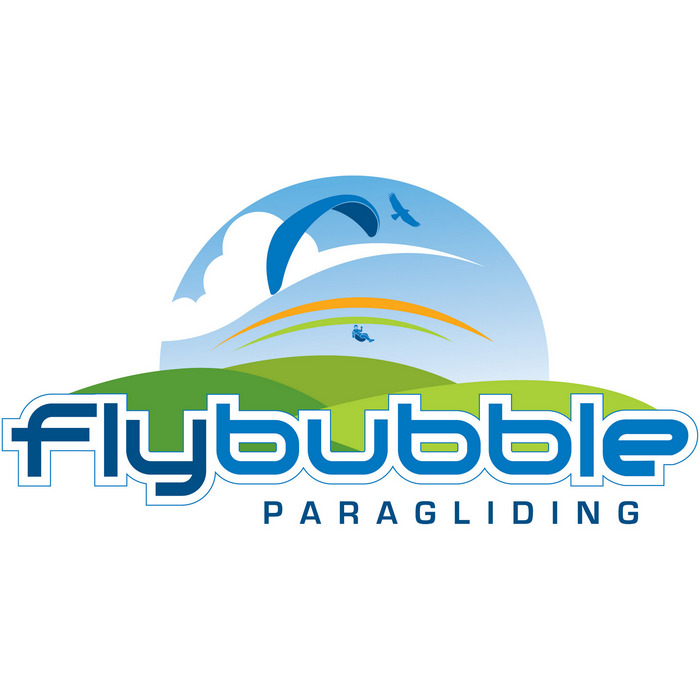
Nova Prion (PAST MODEL)
Select all options to view stock availability

Nova Prion
 |
Introduction:
The PRION is the successor to the well proven PRIMAX which is flown by more than 2000 pilots because of its huge safety potential. The PRION is, like the PRIMAX, designed to fulfil the needs of beginners, but due to its sensitive handling characteristics the glider is also an interesting choice for more experienced pilots who want maximum passive safety.
It doesn’t matter if the pilot is a beginner or advanced: The PRION pilot can rely on a very failure forgiving behaviour in any situation. As an example, we could mention the extremely easy take-off behaviour as well as the big safety margin in more demanding manoeuvres like the deep spiral or after collapses.
The construction of the PRION is based on the ION which is our “Low-Level EN B” glider. Our development team has been able to achieve even safer behaviour in all test manoeuvres on the PRION.
Amongst other changes, we have achieved these characteristics by reducing the aspect ratio, by using a different suspension setup and with well balanced brake geometry.
 |
|
Flying the PRION:
We are proud of the very well balanced and easy take off behaviour. No matter if forward or reverse launches: The PRION’s initial climb is very stable and gives the pilot a lot of time for corrections. The take-off speed is comfortably low.
This easy and comfortable impression continues throughout the whole flight: The PRION is very well damped and offers a lot of stability.
We have considerably improved the turning characteristics compared to the PRIMAX. The PRION responds immediately and direct to steering inputs which allows very efficient climbing.
If you fly in turbulent conditions, you will immediately notice the directional stability through bumpy air, this is mainly a result of the changed line setup. This improvement also helps in thermals, because the pilot isn’t pushed out of a strong thermal core.
As a result of these properties the PRION is the perfect glider to make the first steps in flying. For a more experienced pilot the PRION is an attractive wing to climb better than many pilots with their high performance wings.
 |
|
Safety:
It was certainly one of our main goals to reach the maximum safety and of course we wanted to fulfil the criteria for the EN A / LTF 1 certification. However, our understanding of safety goes beyond that: For the pilots safety, it is important how the glider behaves in real situations and not so much what the glider does in certain manoeuvres in calm air.
We spent a lot of time in very bumpy air to get a proper impression of the behaviour of the glider in such conditions. With the knowledge we had gathered with the ION, we could achieve superior collapse behaviour: In the test manoeuvres, as well as in real situations, the wing doesn’t tend to collapse over a large area and reopens quickly and smoothly. This soft collapse behaviour is beneficial as hard collapses and "explosive" reopening frightens many pilots and leads to instability.
The PRION offers a huge brake travel, which helps to avoid an unintentional stall, for example when counterbraking after an asymmetric collapse.
The deep spiral is a demanding manoeuvre and difficult to learn with every glider, but we were able to achieve quite forgiving behaviour on the PRION. The glider has a very strong tendency to reduce the sink rate without a steering input, furthermore the sink rates don’t get too high.
We have not been able to achieve such an easy behaviour in the deep spiral until now.
 |
|
Performance:
The PRION stands out for its climbing performance. The glider can be turned quite slow and tight and it is easy to vary the turning radius, this makes it comfortable to use weak lift efficiently. The PRION tends to turn quite flat which helps to avoid the excessive demands that can result from a really dynamic turn behaviour.
The glide performance of the PRION is on top of its class. The accelerated glide ratio is quite appealing as well, which can’t be taken for granted on a glider that is also targeted towards beginners.
Technical changes:
The following attributes have been changed compared to the PRION’s predecessor, the PRIMAX:
-
Changed airfoil on the outer cells: this leads to less brake pressure and to a more agile turning behaviour
-
Number of cells: due to the changed suspension geometry, the PRION has 35 cells. (compared with PRIMAX: 36)
-
Modified shape of cell openings: to increase pressure inside the wing
-
Shorter lines: the pilot is closer to the wing and thereby feels more connected to the glider – especially in turns. Ground handling and take-off behaviour is also improved.
-
Integrated vector band: Like on the FACTOR and TRITON we use an integrated vector band on the bottom sail at the cell openings to maximise the dimensional stability in this critical area.
-
Changed brake geometry: we have improved the turning behaviour considerably with the new brake setup. Despite the large available brake travel, the PRION can be piloted very precisely with relatively small brake inputs.
-
Greater accelerator travel: this leads to higher maximum speed.
-
Modified suspension in the centre wing: this leads to more stable behaviour in turbulence.
-
Split A-risers with magnet fixation: for more simplicity at take-off.
-
Dirtholes on the stabilo: for removing dirt easily
-
New brake pulleys with a higher mounting on a short band: this allows better ergonomics
 |
|
Main Characteristics:
-
The PRION is suited to a large range of pilots: From beginners to experienced pilots, who want to enjoy their flights without stress. The glider offers high damping with pleasing handling characteristics.
-
From the first take-offs on the training hill to difficult top-landings or XC-flights in turbulent conditions, the pilot can always rely on the immense safety potential of the PRION.
-
The combination of maximum safety and agile handling behaviour offers an easy, relaxed and fun flight which is without equal.
Nova Prion > Technical Data
| Nova Prion | ||||||
| Type / Size | - | 19 | 21 | 23 | 25 | 27 |
| Zoom factor | - | 0.870 | 0.920 | 0.960 | 1.000 | 1.040 |
| No of cells | - | 35 | 35 | 35 | 35 | 35 |
| Projected wingspan | m | 8.06 | 8.48 | 8.87 | 9.25 | 9.60 |
| Projected surface area | m² | 19.02 | 21.02 | 23.00 | 25.03 | 26.97 |
| Projected aspect ratio | - | 3.42 | 3.42 | 3.42 | 3.42 | 3.42 |
| Flat wingspan | m | 10.30 | 10.83 | 11.32 | 11.81 | 12.26 |
| Flat surface area | m² | 22.32 | 24.67 | 27.00 | 29.37 | 31.65 |
| Flat aspect ratio | - | 4.75 | 4.75 | 4.75 | 4.75 | 4.75 |
| Line diameter | mm | 1 / 1.4 / 1.85 | 1 / 1.4 / 1.85 | 1 / 1.4 / 1.85 | 1 / 1.4 / 1.85 | 1 / 1.4 / 1.85 |
| Line length | m | 6.14 | 6.46 | 6.76 | 7.05 | 7.32 |
| Line consumption | m | 289 | 304 | 318 | 332 | 345 |
| max. profile depth | m | 2.67 | 2.80 | 2.93 | 3.06 | 3.18 |
| min. profile depth | m | 0.64 | 0.68 | 0.71 | 0.74 | 0.77 |
| Weight | kg | 4.9 | 5.3 | 5.6 | 5.9 | 6.3 |
| Legal take-off weight | kg | 60-80 | 70-90 | 75-100 | 90-110 | 100-130 |
| take-off weight motor | kg | |||||
| Places | - | 1 | 1 | 1 | ||
| Certification | - | (EN A / LTF 1) | EN A / LTF 1 | EN A / LTF 1 | EN A / LTF 1 | EN A / LTF 1 |
Nova Prion > Colours
- White Amoure (Red-Orange-White)
- Yellow Sunshine (Red-Black-Yellow)
- Red Moon (Red-White-Red)
- Blue Wave (Orange-White-Blue)

Nova Prion FAQ: What wing loading is recommended on the Prion?
The perfect wing loading depends on the individual likings and on the flying conditions:
If you like weak thermals and if you want a damped flying behaviour, you should fly the PRION in the lower half of the weight range. The handling characteristics are still responsive and enable very efficient thermalling; no matter if the conditions are strong or weak. In weak condition the small minimum sink rate is an advantage to climb well. If a big collapse occurs in very strong conditions, the PRION reacts even more moderate than on top of the weight range.
If you like a livelier characteristic and if you want to fly dynamic manoeuvres, like wing overs, you should fly the PRION in the upper half of the weight range. The turning behaviour is more dynamic and the glider flies a bit faster. (At trim speed and at maximum speed) If the wind is strong this is an advantage. (Especially at take off in strong wind.)
In very turbulent conditions a high wing loading offers more stability, so collapses occur less likely. If the wing collapses the reaction is slightly more dynamic than on bottom of the weight range.
For beginners it might be helpful to ask yourself, what kind of likes you have in other sport: For example: Do you go skiing or cycling for the feeling of speed and dynamic or do you like the calm pleasure about it?
Probably it is the same in paragliding. So go for the top of the weight range, if you want a dynamic and lively behaviour and choose the bottom half of the weight range, if you want a damped and calm enjoyment.
Nova Prion > Downloads
Check-Documents
- Prion material list (139.90 KB)
Test Reports
Manuals
- Prion english (852.45 KB)
Line Plans
Nova Prion Video : Prion on the training hill
| Condition | New |
|---|---|
| EN Certification | EN A |
| LTF Certification | LTF 1 |
| Model Status | Past model |
Standard UK delivery - £3.95 / FREE on orders over £100.
Outside the UK - delivery calculated at checkout (based on the total order value and your delivery address).
We use Royal Mail, Parcelforce Worldwide and other courier companies (e.g. DHL, DPD) depending on shipment value, weight, destination etc.
For more information, please view our order and delivery FAQs page.
If you are not 100% satisfied with your order, you have 14 days from the day of delivery to request a refund.
Delivery costs will not be refunded and you will be responsible for the delivery cost to return the order.
For more information, please read our returns and exchanges policy.



